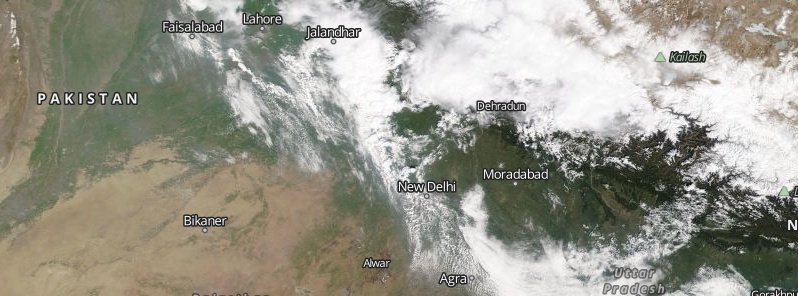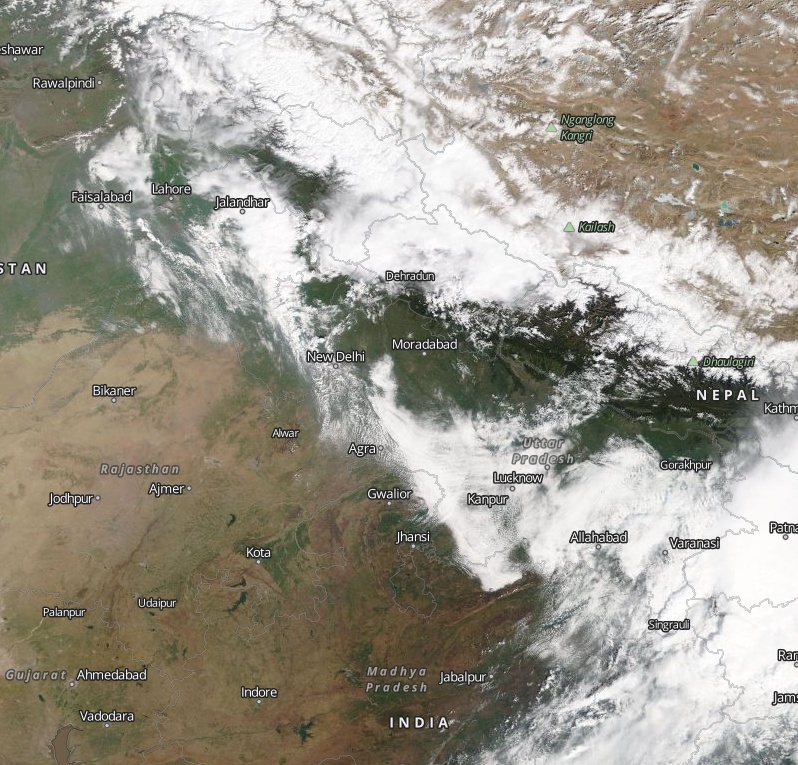Intense storms hits northwestern India, causing severe crop damage and claiming lives of at least 28 people

Very heavy rains accompanied by lightning and destructive hailstorms hit northwestern India, particularly Uttar Pradesh and Delhi, this week, causing severe crop damage and claiming the lives of at least 28 people. Meteorologists said the storms were triggered by a western disturbance — extratropical cyclonic storm originating in the Mediterranean Sea. The storms are following one of the coldest winter seasons on record. Delhi has already recorded its wettest March on record.
Rains in and around Delhi started on Tuesday, March 10 and continued through Saturday, March 14, when the city recorded 37 mm (1.45 inches), according to data provided by the Indian Meteorological Department (IMD).
Other notable 24-hour March records are 56.8 mm (2.23 inches) on March 2, 2015, 27.2 mm (1.07 inches) on March 13, 2007 and 20.6 mm (0.81 inches) in March 2005 — making Saturday, March 14, the second-wettest March day on record.
Official recording station for Delhi, the Safdarjung observatory, recorded 101.9 mm (4.01 inches) of rainfall by March 15, which is already the highest March rainfall ever recorded.
The city recored 97.4 mm (3.83 inches) of rain during the entire month of March in 2015, 61.6 mm (2.42 inches) in 2997 and 36.5 mm (1.43 inches) in 1995.
Heavy rains over Delhi follow one of its coldest winter seasons in years.

Image credit: NASA Terra/MODIS. Acquired March 14, 2020
Officials said they are still assessing losses suffered by farmers and family members of the people who died.
Widespread damage to crops, including wheat, mustard, maize, peas, potato, and cauliflower was reported. The worst affected districts include Muzaffarnagar, Bijnor, and Rampur.
One farmer in Muzaffarnagar said the mustard crop has been completely destroyed due to hailstorm and rain, asking the government to come forward with compensation soon. Huge losses were also reported by mango cultivators.



"Though the moisture feed from the Arabian Sea has been cut off with the eastward movement of the system, low-level southeasterly winds from the Bay of Bengal are feeding moisture towards eastern India, where the upper-level features are also conducive for development of thunderstorms and hailstorms," IMD said.
The storms are expected to shift further eastward by Sunday, March 15, but another western disturbance is expected to affect the region after March 19.
Western disturbances are winter-time extratropical cyclonic storms in northern India. They originate over the Mediterranean Sea and travel eastwards to enter the Indian subcontinent from the northwest.
They usually bring mild rainfall, beneficial for crops.
Featured image credit: NASA Terra/MODIS. Acquired March 14, 2020

Commenting rules and guidelines
We value the thoughts and opinions of our readers and welcome healthy discussions on our website. In order to maintain a respectful and positive community, we ask that all commenters follow these rules.